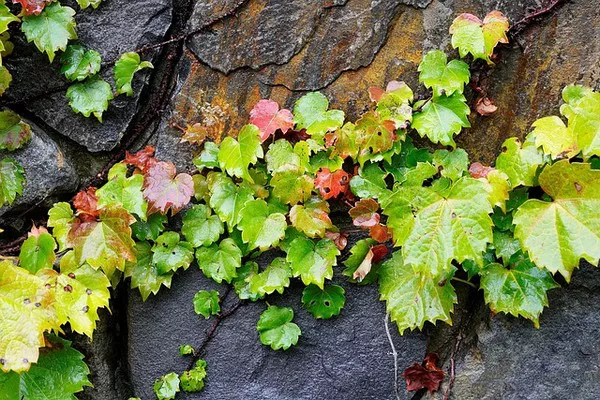In the vast kingdom of Plantae, flowering plants (angiosperms) often take center stage with their vibrant blooms and diverse forms. However, equally fascinating are non-flowering plants, which encompass a multitude of species displaying unique adaptations and ecological roles. These plants, categorized under the divisions Bryophyta, Marchantiophyta, Anthocerotophyta, and Pteridophyta, offer a glimpse into the rich tapestry of plant life beyond flowers. Let’s delve into the types of non-flowering plants and their significance in ecosystems worldwide.
1. Bryophytes: Mosses, Liverworts, and Hornworts
Bryophytes represent some of the oldest land plants, characterized by their lack of vascular tissue and reproductive structures such as flowers and seeds. This division includes mosses (Bryophyta), liverworts (Marchantiophyta), and hornworts (Anthocerotophyta). Despite their small stature, bryophytes play crucial roles in various ecosystems.
Mosses, with their lush green carpets covering forest floors and rocks, are perhaps the most recognizable among bryophytes. Liverworts, often found in damp habitats, exhibit a diversity of forms ranging from leafy structures to flattened thalli. Hornworts are less common but can be identified by their horn-shaped sporophytes.
2. Ferns and Allies: Pteridophytes
Pteridophytes represent another group of non-flowering plants, commonly known as ferns and their allies. Unlike bryophytes, pteridophytes possess vascular tissue, allowing them to grow taller and inhabit a broader range of environments. Ferns, the most prominent members of this division, are renowned for their graceful fronds and intricate reproductive structures called sporangia.
Beyond ferns, pteridophytes include horsetails (Equisetum) and whisk ferns (Psilotum and Tmesipteris), each with distinctive features. Horsetails, also known as scouring rushes, often grow in wet environments and are characterized by jointed stems and silica-rich tissues. Whisk ferns, on the other hand, lack true leaves and roots, showcasing a simplified morphology.
3. Gymnosperms: The Naked Seed Plants
While gymnosperms produce seeds like flowering plants, they differ in their reproductive structures, which are not enclosed within ovaries or flowers. This division encompasses a diverse array of plants, including conifers (Coniferophyta), cycads (Cycadophyta), ginkgos (Ginkgophyta), and gnetophytes (Gnetophyta).
Conifers, such as pines, spruces, and firs, dominate many temperate and boreal forests with their cone-bearing habit and needle-like leaves. Cycads, often likened to living fossils, resemble palm trees and thrive in tropical and subtropical regions. Ginkgos, represented by a single living species (Ginkgo biloba), are renowned for their fan-shaped leaves and resilience to urban environments. Gnetophytes, including genera like Ephedra, Welwitschia, and Gnetum, exhibit a range of morphological adaptations, from vine-like growth forms to shrubby habits.
4. Other Non-Flowering Plants: Algae and Lichens
Beyond the traditional classifications, non-flowering plants also include algae and lichens, which contribute significantly to various ecosystems. Algae, encompassing diverse groups such as green algae, red algae, and brown algae, are primarily aquatic but can also occur in moist terrestrial environments. From microscopic plankton to giant kelp forests, algae play crucial roles in aquatic food webs and oxygen production.
Lichens, symbiotic associations between fungi and algae or cyanobacteria, are resilient pioneers colonizing diverse habitats worldwide. These organisms exhibit a wide range of growth forms, from crustose and foliose lichens to fruticose forms resembling miniature shrubs. Lichens serve as indicators of environmental quality and contribute to soil formation through their interactions with rocks and organic matter.
Significance of Non-Flowering Plants in Ecosystems
Non-flowering plants are integral components of ecosystems, contributing to biodiversity, soil stability, nutrient cycling, and climate regulation. Despite their often inconspicuous appearance, these plants support a myriad of organisms and provide essential ecosystem services.
For example, bryophytes and lichens serve as primary colonizers in barren landscapes, facilitating soil formation and paving the way for subsequent plant growth. Pteridophytes play vital roles in forest ecosystems, providing habitat and food for various organisms while contributing to nutrient cycling through their decomposition.
Gymnosperms, with their towering conifers and resilient cycads, dominate diverse landscapes worldwide, shaping the ecological dynamics of forests and influencing global carbon cycles. Additionally, algae contribute significantly to aquatic ecosystems, serving as food sources for numerous organisms and driving primary production through photosynthesis.
See Also Choosing the Perfect Flower Color for a 70th Birthday Celebration
Conclusion
In conclusion, non-flowering plants encompass a diverse array of organisms, each with unique adaptations and ecological significance. From the ancient bryophytes to the majestic gymnosperms, these plants enrich ecosystems worldwide and provide invaluable services to countless organisms. Understanding and appreciating the diversity of non-flowering plants is essential for conservation efforts and sustaining healthy ecosystems in a rapidly changing world.


